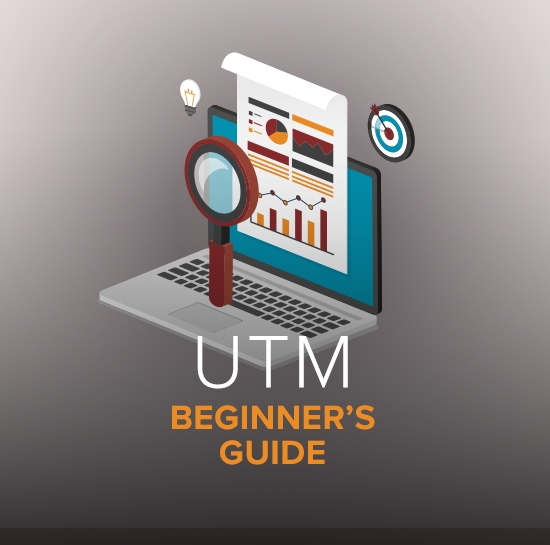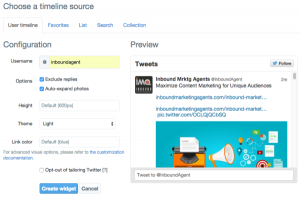(Plus a UTM Builder Worksheet to Steal)
It’s about to get hot in here. Today, we’re talking about tracking links, and while some may find this topic dull, I will argue that UTM links can be one of the sexiest tactics in a marketer’s toolbox.
In this guide, beginners to UTM links will understand what UTM links are, why they are useful, and some of the ways in which you can easily implement them for added spice to your marketing analytics.
What are UTM links?
Urchin Traffic Monitors (UTM) are short, coded text snippets at the end of URLs that track the success of a marketing strategy. UTM parameters help determine exactly which channels, techniques, and media contributed to your success.
In plain English, you can add a few characters to the end of your URL. In Google Analytics, you are able to more easily see exactly where a webpage visit is coming from.
UTM Parameters: Medium, Source & Campaign
Like a psychic medium who can pinpoint the root of your wildest dreams, UTM links use a medium to hone in on the exact channel that is bringing your social media marketing campaign some major success. Examples of mediums within UTM links include email, social, blog and paid content traffic.
A medium is a UTM parameter that may feel sort of broad. (This isn’t amateur hour! Of course, you already know how to track a campaign’s traffic from Facebook!) A medium is paired nicely with the use of another UTM parameter: a source. By adding a source to your UTM code, you can decipher the exact origin your traffic is coming from. For example, the medium that directed users to your website may be Twitter, but the source was a cheeky tweet that advertised your business’s BOGO sale alongside a picture of a cat. Go you!
A more general UTM parameter is a campaign name. This is a code for grouping specific info from a particular marketing campaign you are running in one spot. This is more of an organizational tool than a method of physically tracking where traffic is deriving from. They are best labeled by using the campaign name or topic.
But Wait… That’s Not All! Utilizing UTM Content & Term
If you identify as a pro UTM tracking link user, it may be time to apply even more parameters to really perfect that campaign strategy. The content parameter allows you to track a specific piece of content within a pairing of a medium and source. Going back to the BOGO tweet example, if you linked two destinations within the said tweet, adding a content code would isolate the one that a user clicked on.
Another more specific UTM parameter is called a term. This is a code tacked on to the UTM link in order to track keywords used within a certain paid ad. Many marketers use Adwords paired with Google Analytics to find this piece of info, but a term can also get the job done.
UTM Links: Is Less More? It’s Up to You.
One of the best things about UTM links is that you can “build” your link using as many or as little parameters as you like. This gives you the ability to play around with current campaigns and easily discover which aspects of web traffic are most applicable to your goals. Your Google Analytics page can narrow down general traffic finds (like the amount of traffic your social platforms are sending to your company’s home page), but UTM links allow you to isolate the nitty and gritty details.
Why Would I Use UTM links?
Here’s one easy case study.
Let’s say you’re an eCommerce store running a spring promotion on sandals. You’ve done a great job of creating content for social media, email and AdWords display that pushes your promotion to a larger audience.
Sure, you can manually go in and look at the performance of each piece – but wouldn’t it be great to compare channels side-by-side for this specific promotion and judge their success on the same metrics?
This is where UTMs come in!
If I add a UTM link with a set campaign ID to every single link I send out, and I make sure I specify which channel it’s coming from, I can easily attribute traffic and know which channels performed best for me. If you’re trying to understand which ones are the most “worth it” in terms of cost, this can really help.
Another instance where it can help is if you’re using influencers or paid placements. Let’s say you have 10 influencers who are all going to send an email about your promotion. Without UTMs, you would likely be able to see that the traffic came from an email. But you wouldn’t be able to narrow down the source or influencer. And if they send multiple emails on your behalf, it just gets trickier. Which email was the most successful? Which link was the most clicked? You can see how the more variables you add, the harder it can become to track, and the more important it is to add that additional data.
Even if you’re not an eCommerce business, UTMs can come in handy. Here are just a few examples of instances where you might use them:
- You’re launching a new smoothie campaign at your cafe and want to track the traffic that comes from your Twitter post announcing the shop’s new product. You would add a medium and source to the URL like so:
utm_campaign=smoothies&utm_medium=social&utm_source=twitter
- You own a gym and are offering a 30-day trial to anyone who signs up by clicking this link. To decipher the number of people who navigated to your site via the promotional link, you would include this detail in your campaign parameter:
utm_campaign=30daytrial
- You have a Google Ads account and want to see how the keywords “microbreweries Virginia” identify in an ad you are running through them for your Virginia-based microbrewery. You could add this as a term parameter:
utm_term=microbreweries+Virginia
UTM Best Practices:
DO:
- Fill out as many fields as you can. The more information you provide, the more you’ll be able to use it later.
- Differentiate campaigns with different names.
- Use underscores or dashes “-” to separate words.
- Use “content” to show two different versions of the same ad, like using a different image, or trying a different text variation.
- Put used UTMs in a spreadsheet for reference later on.
- Use the same label consistently (Example: Facebook, facebook, and fb would NOT show up the same in Google Analytics, so pick one and stick with it.)
- Use UTMs often!
DON’T:
- Capitalize things sometimes and not other times (parameters are case sensitive!)
- Use spaces (these will break your UTMs!)
Campaign URL Builder: It’s That Easy
Check out this campaign URL builder for a quick step-by-step process to tailoring your next UTM link to your liking. Here’s a preview of the helpful site:
![]()
Chrome Extension: Google Analytics URL Builder
You can download this Chrome extension to make building URLs easy.
- Get the extension here and click “add to chrome” https://chrome.google.com/webstore/detail/google-analytics-url-buil/gaidpiakchgkapdgbnoglpnbccdepnpk
- I’ve created some settings for you. Download the file here:
https://drive.google.com/a/ironistic.com/file/d/0B1pcOWbuEP53clBKb3JOUGo3MU0/view?usp=sharing - Click on the image in your browser bar to prompt the extension to load.
- Click the pencil next to #2 to edit presets
- You’ll be taken to a new tab. Click on import.
- Select the file you downloaded and upload it.
- Now you’ll see presets loaded for you as a starting point.
- NOW IT’S EASY TO CREATE A UTM LINK:
- Navigate to the page you want to share.
- Click on the UTM extension and fill out the fields or select a preset (note: some fields are placeholder text!!)
- Copy the new link and share away!
UTM Tracking Sheet
I’ve created a place that both tracks UTMs so we can reference them later (which will be important in tracking your campaigns’ success!) as well as builds them for you:
You’ll see a few examples in this file to kick things off.
Are UTM Links Applicable to Your Business’s Next Campaign?
The answer is most certainly yes. In conclusion, UTM links allow you to do what you’re already achieving with Google Analytics with even more options to narrow down precisely where your best hits are coming from. The ability to play around with parameters makes testing your link success a breeze and creates a roadmap to fine-tuning those social media marketing practices. Don’t be afraid of the daunting codes! With this description of the most widely-used parameters and access to Google Analytics’ UTM link builder, you’ll be an urchin traffic monitors expert in no time.
Digital & Social Articles on Business 2 Community
(81)





